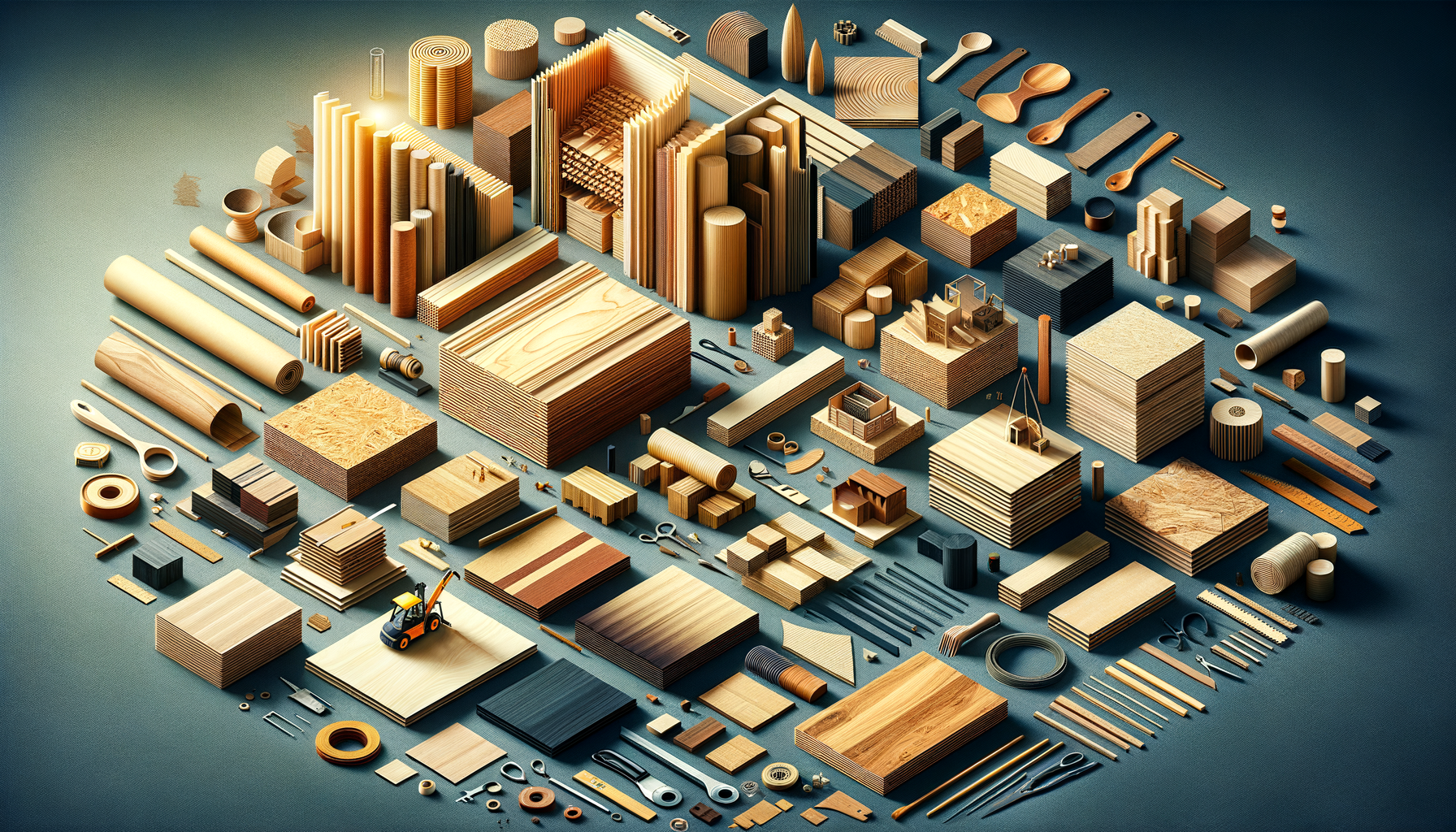
Plywood: Types, Uses, and What to Consider Before Buying
Introduction to Plywood
Plywood is a staple material in the construction and furniture-making industries due to its versatility and strength. Made by gluing together thin layers of wood veneers, plywood is known for its durability and resistance to warping. It is used in a variety of applications, from building construction to crafting furniture and even in artistic projects. Understanding the different types of plywood and their specific uses can help you make informed decisions for your projects.
Types of Plywood
Plywood comes in various types, each tailored for specific applications. The most common types include:
- Softwood Plywood: Typically made from pine, fir, or spruce, this type is often used in construction for walls, roofs, and flooring.
- Hardwood Plywood: Made from woods like oak, maple, or birch, it is used for furniture and cabinetry due to its attractive finish.
- Tropical Plywood: Sourced from tropical regions, this type is known for its strength and is often used in heavy-duty applications.
- Flexible Plywood: Designed to bend and curve, it is used in creating curved surfaces in furniture and architecture.
Each type of plywood has unique characteristics that make it suitable for specific tasks, and selecting the right one is crucial for the success of your project.
Applications of Plywood
Plywood’s adaptability makes it a go-to material for various projects. In construction, it is used for:
- Flooring and Roofing: Its strength and stability make it ideal for supporting structures.
- Wall Sheathing: It provides a solid backing for walls, offering insulation and soundproofing.
In the furniture industry, plywood is valued for its aesthetic appeal and ease of use. It is commonly used in:
- Cabinetry: Its smooth surface is perfect for painting or veneering.
- Tables and Chairs: Lightweight yet strong, making it easy to handle and durable.
DIY enthusiasts also favor plywood for projects like shelving, storage solutions, and decorative pieces due to its affordability and ease of customization.
Factors to Consider When Buying Plywood
When selecting plywood for your project, consider the following factors:
- Grade: Plywood is graded based on the quality of the veneers used. Higher grades have fewer knots and defects, making them suitable for visible applications.
- Thickness: The thickness of plywood affects its strength and flexibility. Thicker sheets are used for structural applications, while thinner sheets are ideal for decorative purposes.
- Environmental Impact: Consider the source of the wood and the manufacturing process. Opt for plywood certified by environmental organizations to ensure sustainability.
By taking these factors into account, you can choose the plywood that best meets your needs and contributes to the success of your project.
Conclusion: Making the Right Choice
Plywood is an essential material in many industries, offering a balance of strength, versatility, and cost-effectiveness. By understanding the different types and applications of plywood, you can make informed decisions that enhance the quality and durability of your projects. Whether you’re building a house, crafting furniture, or embarking on a DIY project, selecting the right plywood is key to achieving outstanding results. Remember to consider the grade, thickness, and environmental impact to ensure your choice aligns with your project’s requirements and values.


